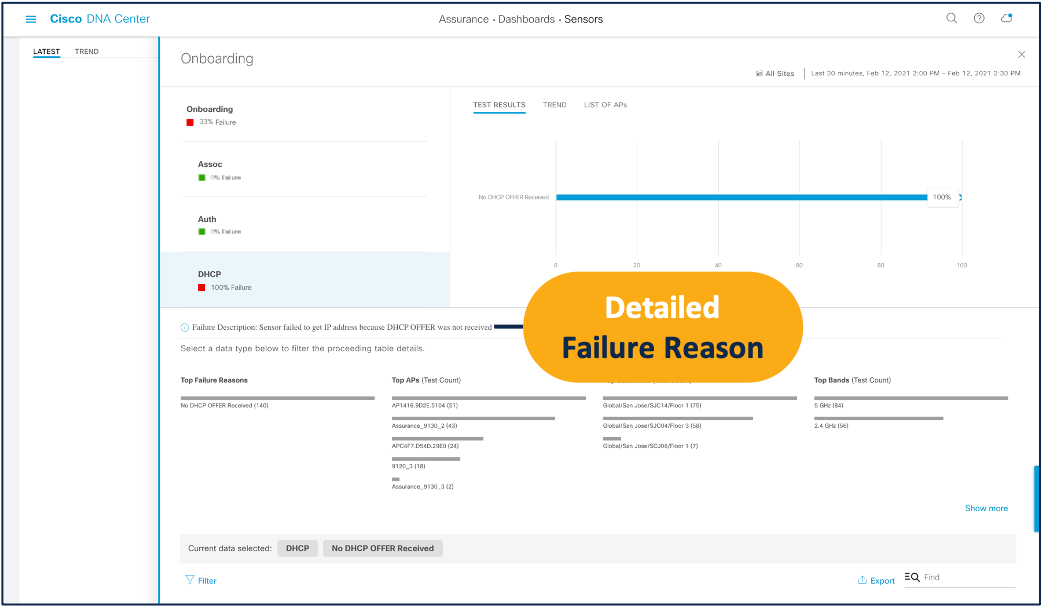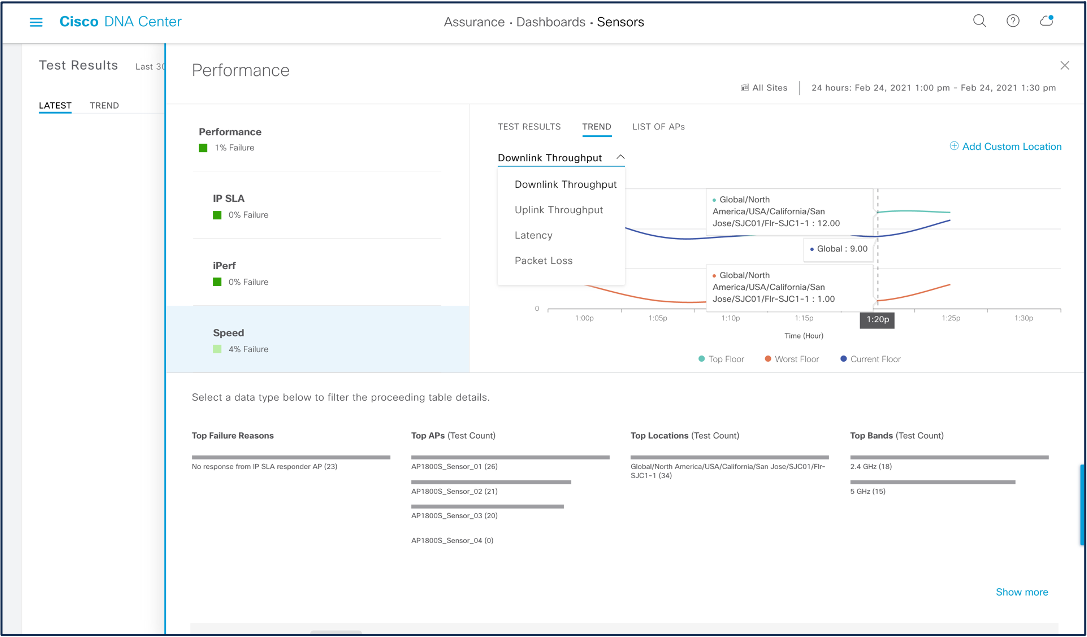
Co-Author: Mansi Jain, Technical Leader in IBNG at Cisco Systems
The Life of an IT Administrator
It’s 6:30 AM, Monday morning, and you’ve just been woken up by the incessant buzzing of your phone. Still half asleep, you open your email to check what the fuss is about, and to your displeasure, 50+ IT Tickets have flooded in overnight.
Email 1 Subject: *Alert* Wireless Network Down in Building A.
Email 2 Subject: *Alert* Employees Unable to Access Email in Building B.
…
…
Email 50 Subject: *Alert* Video Conferences Dropping Users in Region C.
You close your eyes and groan as you mentally prepare yourself for what is about to be one hell of a day ahead. But, amidst the peak of your self-pity, it hits you.
Your team had finished deploying Cisco’s Aironet Active Sensors the Friday prior. Realizing you can now leverage Cisco’s proactive monitoring solution to root cause all of these issues, the feeling of self-pity vanishes as you now feel empowered and ready to tackle the day ahead.
Dramatic? Yes.
Unrealistic? Absolutely not.
Introducing the Aironet Active Sensor
The truth is wireless networks are inherently complex and have countless points for failure. Without the proper tools to provide visibility, it’s challenging to ensure a consistently excellent user experience.
The Aironet Active Sensor is the beacon of light amidst this darkness. It’s a small-form-factor wireless client that tests your wireless network and visualizes the results through Cisco DNA Assurance. Managed by Cisco DNA Center, users have the flexibility to design and deploy a multitude of wireless tests such as onboarding, RF assessment, network services, Performance, app connectivity, and email to analyze their network’s health from a wireless client’s perspective.

Leverage Proactive Monitoring for Quick Root Cause Analysis
6:40 AM: To address the first issue, you navigate to the Sensor Dashboard and filter by “San Jose/building A.“ Using the test result timeline, you’re able to immediately deduce that the sensors have begun reporting onboarding failures at precisely 6:00 AM.
Just below in the Test Results section, you can see in plain text that the sensors are reporting specifically a DHCP error, with the reason “No DHCP OFFER Received.“

6:41 AM: You scroll down to the Test Results Heat Map searching for further evidence, and right away, observe that out of the onboarding test suite, only DHCP tests are failing while both association and authentication tests are passing.

6:42 AM: Almost certain the issue stems from a DHCP server failure, you click into the heat map to drill down into the most granular view, and plain day, you see 100% failure for “No DHCP OFFER Received.“

You can’t help but laugh, it’s been literally 2 minutes, and you’ve already gone from pinpointing the impact of the issue to understanding its root cause.
A Single Client to Rule Them All
The efficacy level from the scenario above is the standard of what we can expect to achieve with the Aironet Active Sensor. But beyond troubleshooting issues, there are so many other use cases being actively used by sensor customers today, such as:
- Proactive Performance Analysis – Supporting both iPerf 3 and NDT 7, you can schedule throughput tests in any location to assess and compare performance trends between different sites and sensors for critical performance KPIs

- Remote Branch Management – It’s common for large corporations to have multiple remote branches that may not have on-duty network administrators. Simply deploy a few Aironet Active Sensors, and just like that, the entire site can be monitored remotely.
- Network Upgrade Monitoring – Every network requires software upgrades occasionally to ensure the best user experience; however, the pain point lies the network downtime. The Aironet Active Sensor can proactively monitor the entire process and assess both post-upgrade stability and benefits.
The next time you run into complicated wireless issues, keep this in mind. Regardless if it’s root-causing network anomalies, monitoring for network stability, or assessing critical RF KPIs, with Aironet Active Sensors deployed, have a peace of mind because managing your network will never be easier!
Learn more about the Aironet Active Sensor – cs.co/Sensor_Home_Page
Watch Aironet Active Sensor Videos – https://youtu.be/4OeHoQ-yyFI
Check out our Intent-Based Networking video channel.
Subscribe to the Networking blog


Very nicely written…
Appreciate it!
Very informative and helpful !!!
And a clear explanation why its that importance to have Cisco Sensor integrated with DNAC
Absolutely! Thanks for the feedback.
Great work in putting this.
Thank you Ashish!